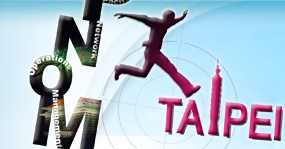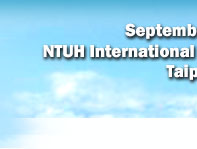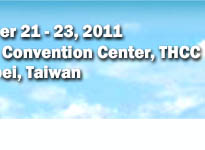|
[About
Taiwan][About Taipei][Local
Transporation][Language][Currency] |
||
|
Taiwan
Taiwan is a leaf-shaped island with only about 36,000 square kilometers (14,400 square miles) total land area. It lies to the southeastern coast of mainland Asia, across the Taiwan Strait from China. It was once called "Formosa" or the beautiful island by the Europeans on their first arrival in the 16th century. Taiwan is rich in natural wonders. We have more than 200 mountains that soar above 3,000 meters in height, countless arresting landscapes and alluring coastal scenes created by our unique geology and topographyand. Furthermore, there are about 18,400 species of wildlife thriving on this island. The population is 23 million. Most of the inhabitants are the descendants of immigrants from the various provinces of mainland China, especially from the southeastern coastal provinces of Fujian and Guangdong. Also there're about 510,000 natives that are classified into 14 cultural tribes. Taiwan is famous for its IT industry, especially in laptop PCs, liquid crystal display (LCD) monitors, as well as smart phones. More than 82.6% of households in Taiwan have computers. Internet users are about 70.1% of the island's population, while the mobile phone penetration rate has surpassed 110%. For more information, please visit the Tourism Bureau website. [Top] |
||
|
Taipei
Taipei is the capital city of Taiwan. It is located in the Taipei basin northern part of Taiwan. Being the most populated as well as the capital city, Taipei is vibrant and full of fascination. From Taipei 101, the once tallest building in the world, to National Palace Museum, which holds extensive collection of Chinese art, you will find a mix of modern and traditional with a generous dash of energy and friendly faces. The city is a many-faceted treasure that will impress you and call you back again! Click here to learn more about this exciting city. [Top] |
||
|
Taipei has a very convenient public transportation system. Visitors can take buses, taxis or subways to anywhere they want. The following 3 are the mostly used system:
To get an idea how to shuttle between the airport and Taipei city, see the Transport Info page. [Top] |
||
|
The official language of Taiwan is Mandarin Chinese, but Minnan, the dialect branch of Fujian, is also spoken. Though available in most signposts and documents, English is not widely spoken in Taiwan. In case you want to ask for help, teenagers or youngsters have a higher chance to talk in English. [Top] |
||
|
The currency in Taiwan is the new Taiwan Dollar. Foreign currencies can be exchanged at government-designated banks, hotels and airports. The exchange rate to US dollar is about NT$30 for 1 US dollar. You can find latest exchange rates here. Banks that provide foreign exchange are listed here. [Top] |
||
|
Taipei is in the sub-tropical zone. The weather in late September is generally hot, but may get cooler in the morning and at night. The temperature is 28'C ('82.4'F) in average. Afternoon thundershower takes place frequently in this season. It is advised you bring an umbrella with you if going out in the afternoon. Visit the Central Weather Bureau website for the up-to-date weather information. [Top] |
||
|
Taiwan uses the electricity of 110V at 60 cycles. 220V is available but not very common. The shape of a plug is shown below. You'll need an adapter if your appliances use different voltage or plugs. Note that all 220V plugs are marked explicitly. If you don't see any indication about the voltage on a plug, it must be 110V.
[Top] |
||
|
Public telephones are available. They accept coins or telephone cards. Telephone cards can be bought from convenience stores or railway stations and they have NT$100, NT$300 and NT$500 different kinds of amounts. For mobile phones, Taiwan mainly uses GSM900/1800 system. Many tele-services will automatically activate international roaming so that you can dial just like in your own country. Please confirm with your local telecomm service provider. Wireless (Wifi) hot-spots can be found in major MRT stations and most cafe shops. Most of them are charged, though. You can buy a pre-paid WLAN card in convenience stores and access the internet through these wireless routers. [Top] |
|
|
|
|
|
|
|
|
|
 |
 |
 |
 |
|
|
|
 |
 |
 |
 |
|
|
|
 |
 |
 |
 |
|
|
|
 |
 |
 |
 |
|